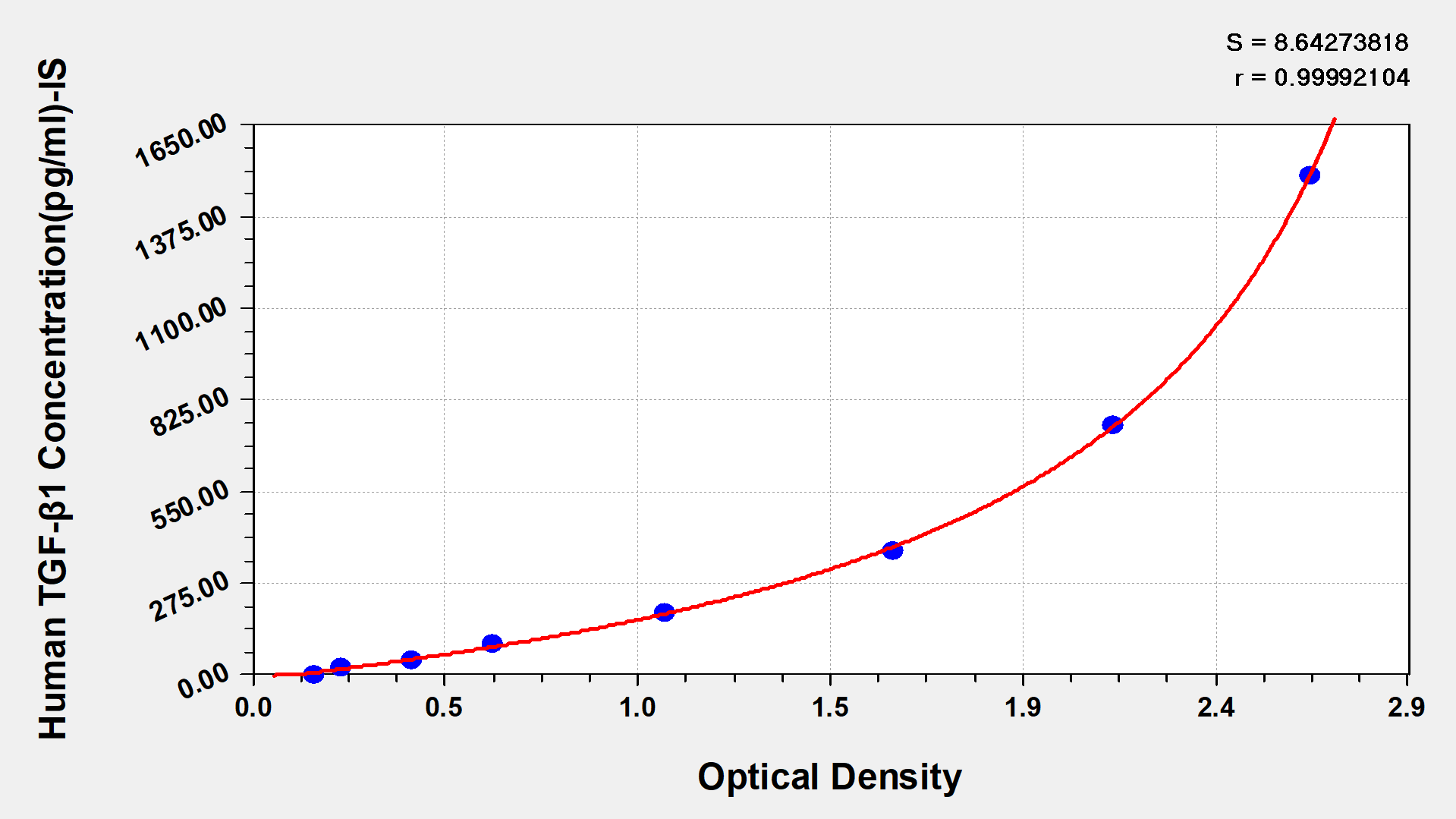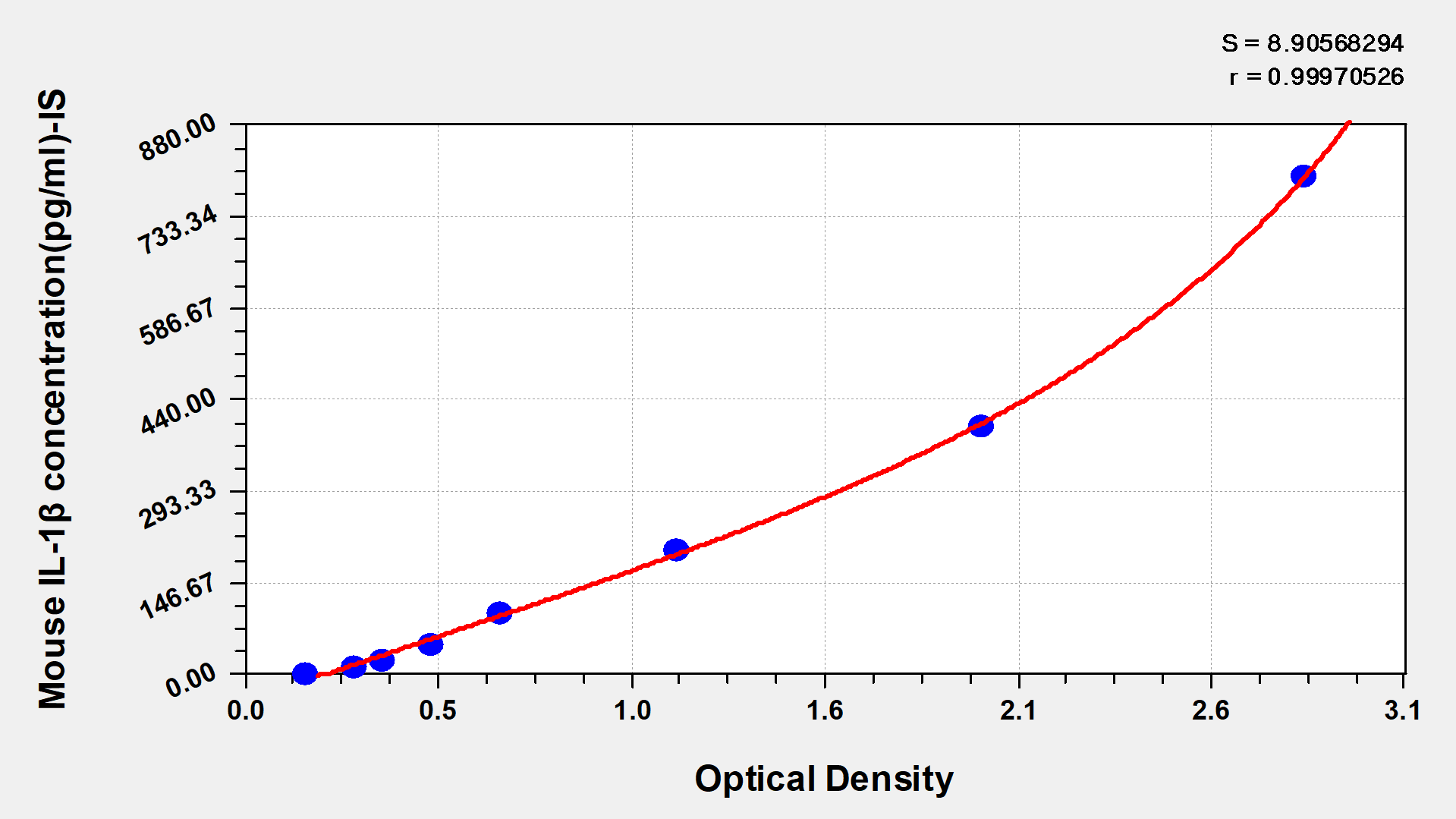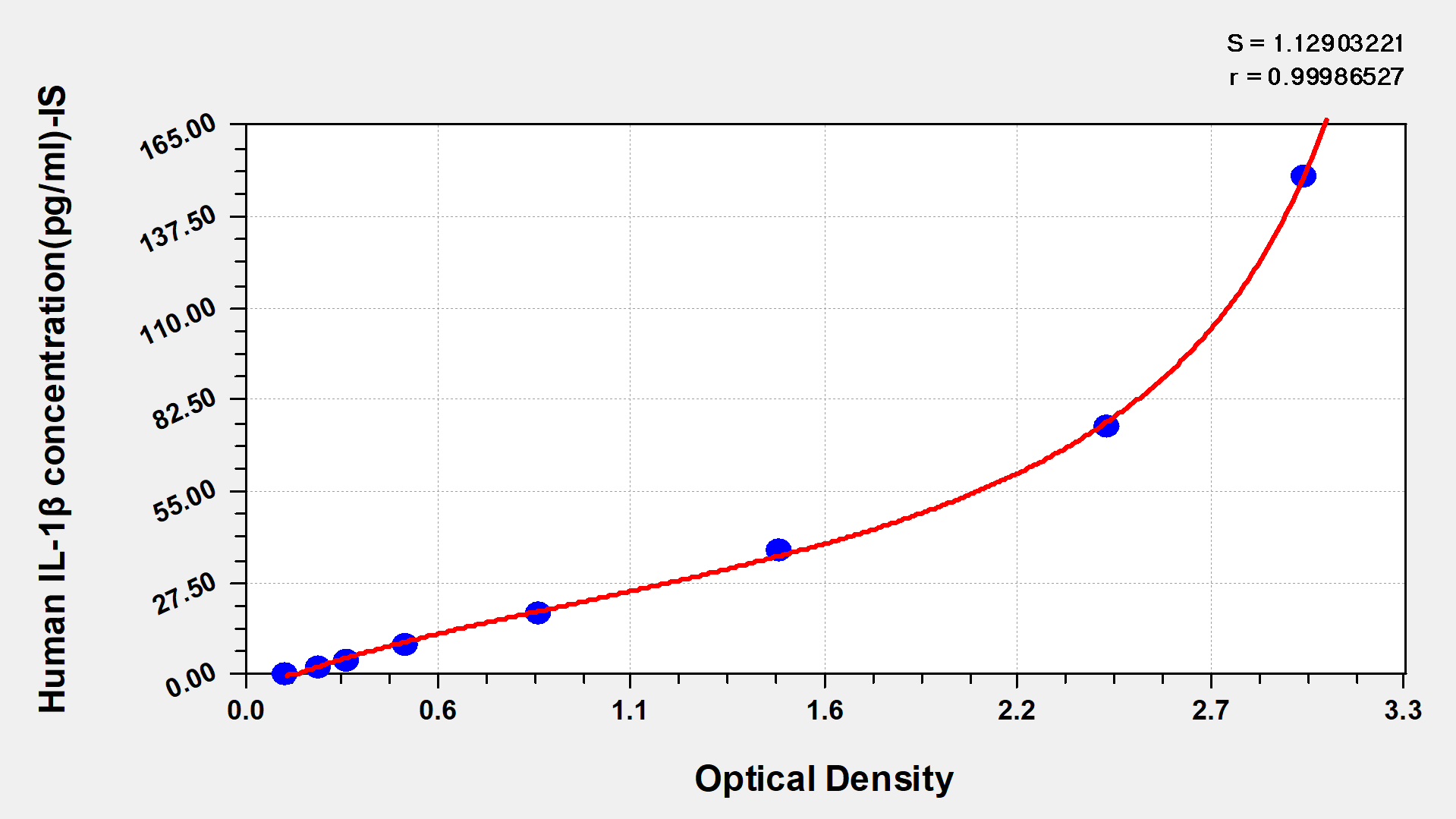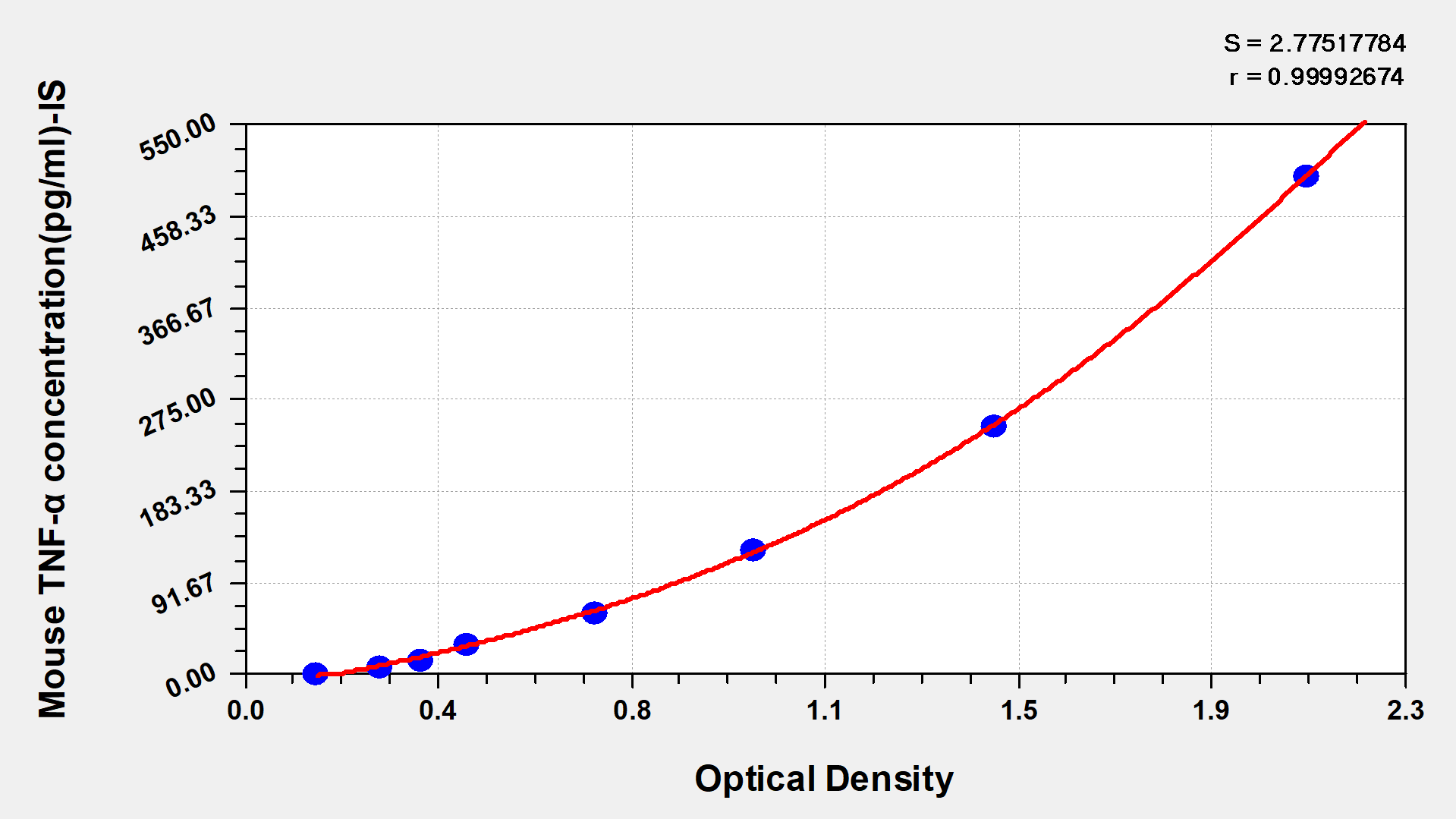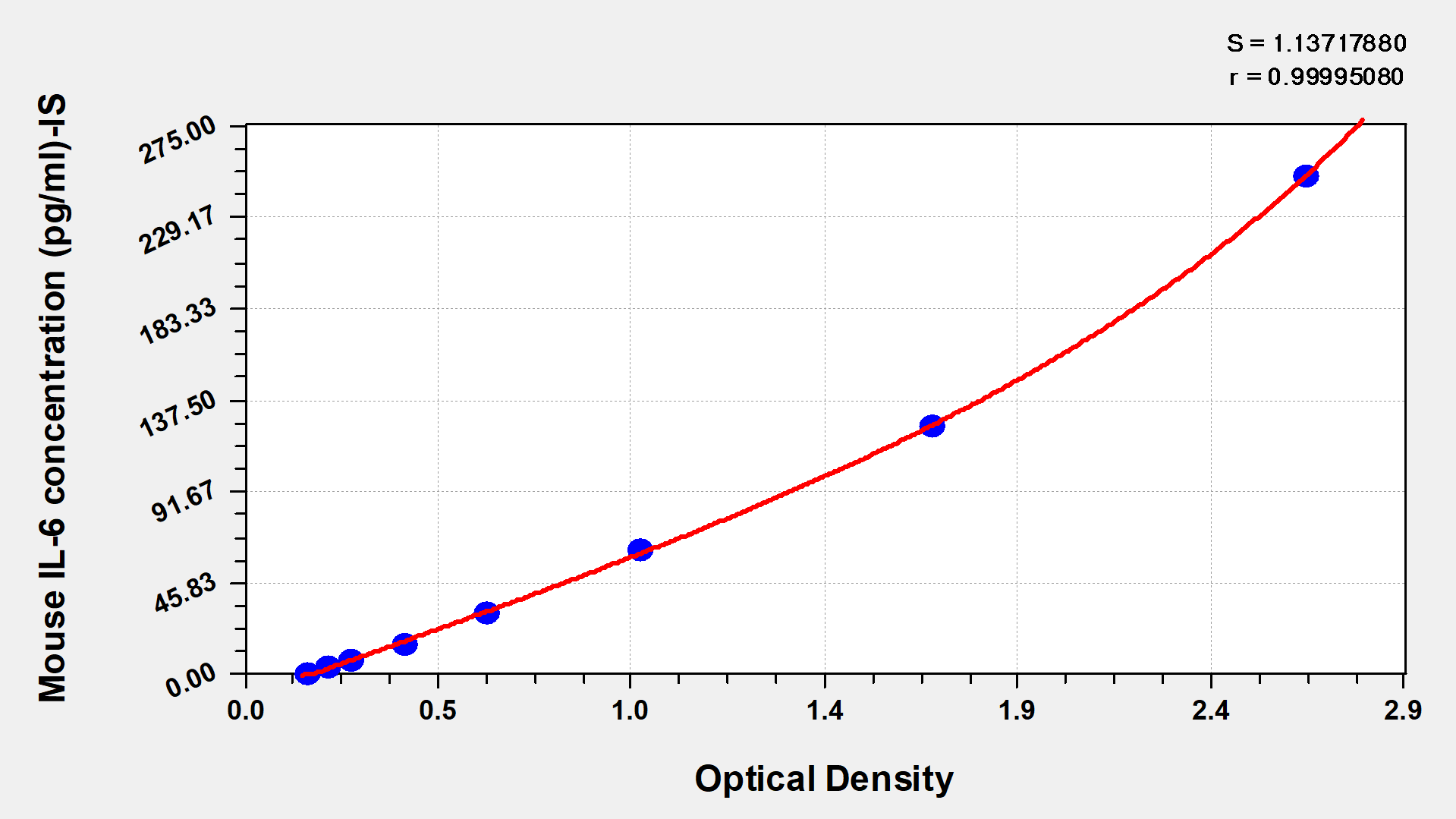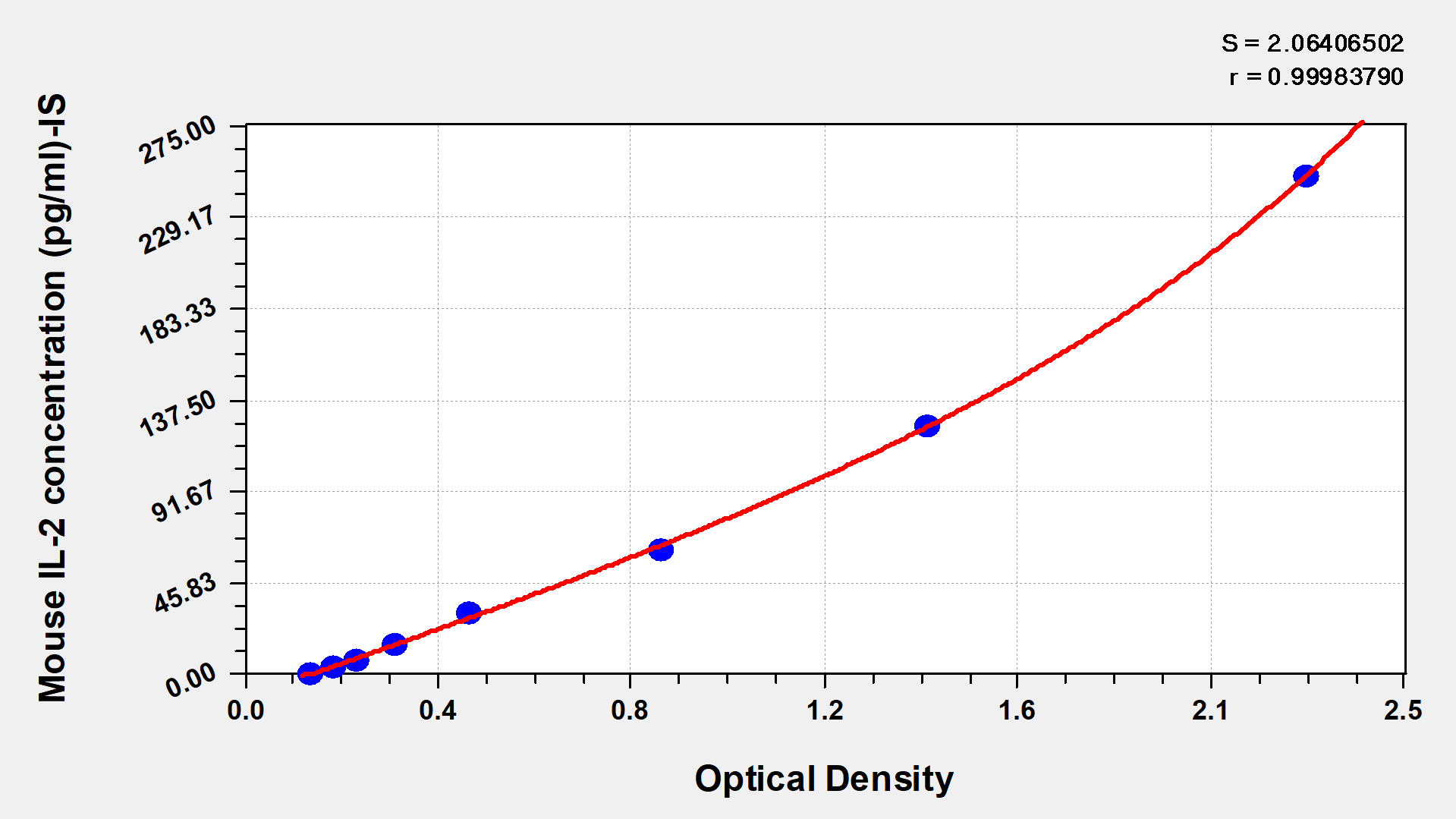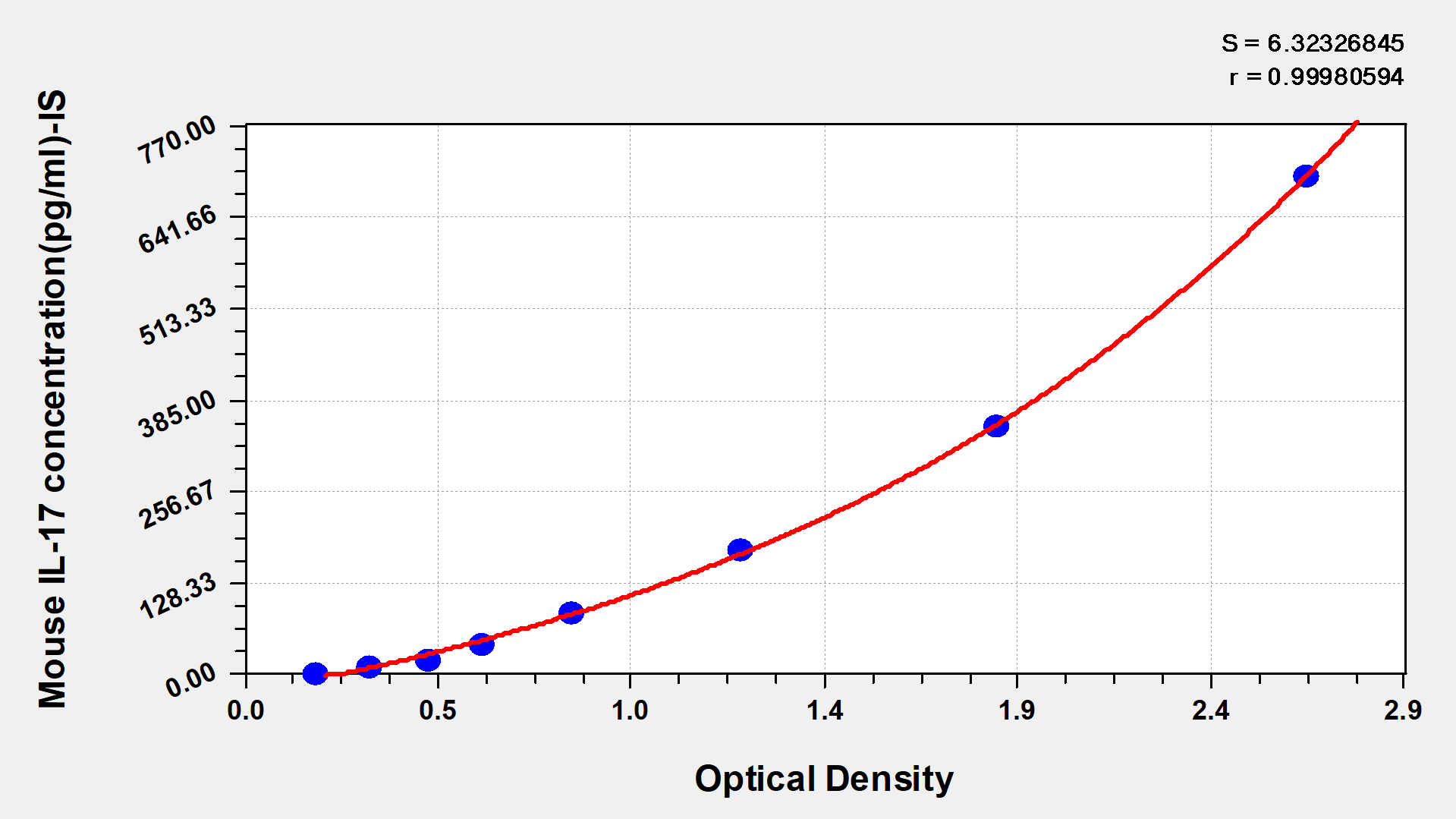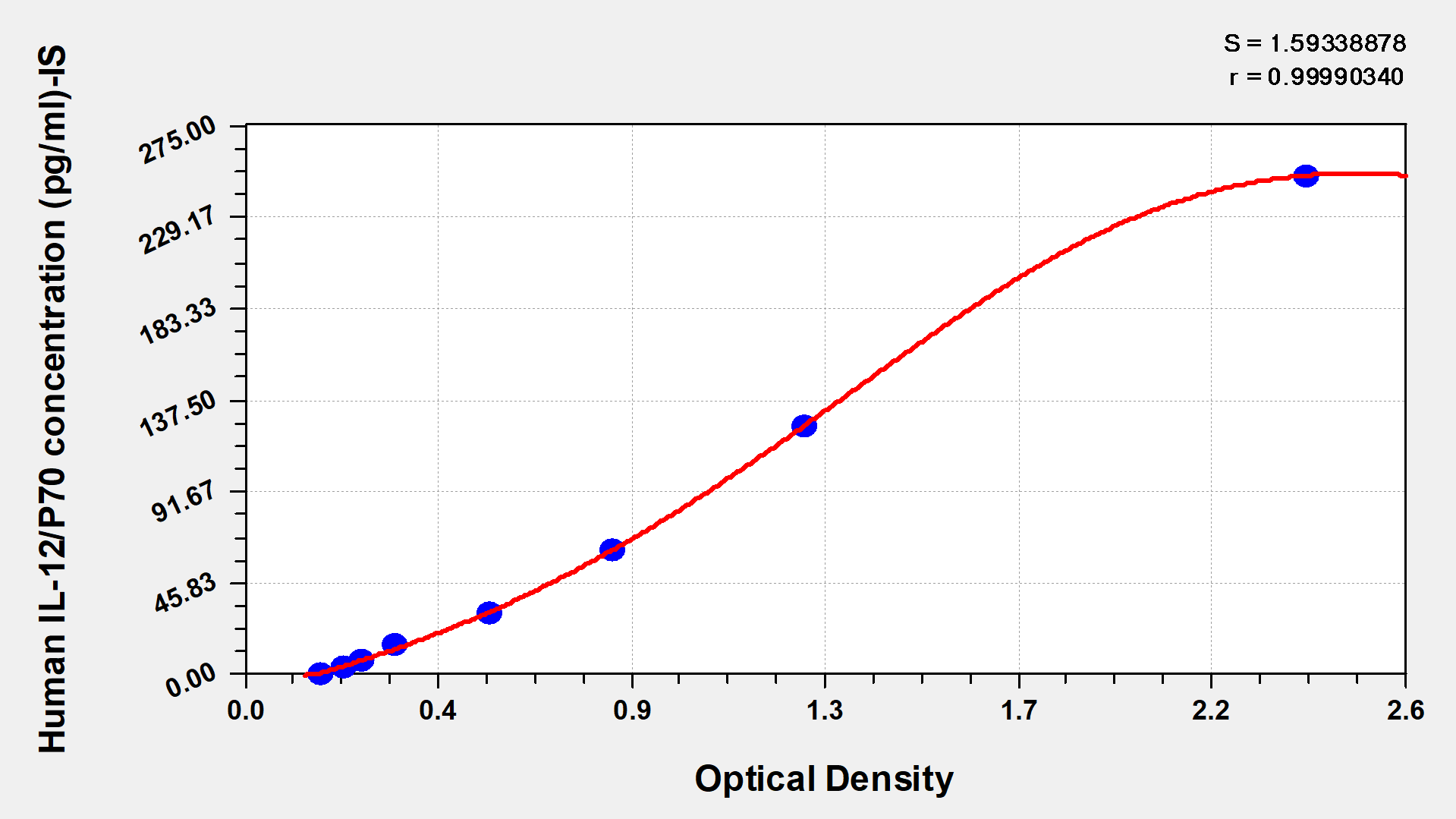-
中文名称:小鼠CXC趋化因子配体16(CXCL16)酶联免疫试剂盒
-
货号:CSB-E08873m
-
规格:96T/48T
-
价格:¥3200/¥2500
-
其他:
产品详情
-
产品描述:CUSABIO试剂盒采用双抗体夹心酶联免疫吸附法,专为定量检测小鼠血清、血浆及组织匀浆样本中的CXC趋化因子配体16(CXCL16)设计。CXCL16作为具有跨膜结构的趋化因子,在免疫调节和炎症反应中发挥重要作用,其异常表达与动脉粥样硬化、类风湿性关节炎等疾病进程密切相关,是炎症性疾病机制研究的重点分子。试剂盒标准曲线覆盖7.8至500 pg/mL的线性范围,最低检测限为1.95 pg/mL,可在4.5小时内完成检测流程,预包被96孔板包含标准品、检测抗体及HRP标记链霉亲和素等核心组分,操作时仅需进行样本孵育、洗涤及显色步骤。适用于科研场景下炎症相关动物模型构建、药物干预效果评估或免疫调控机制研究,特别针对心血管疾病、自身免疫性疾病等领域的实验需求,能够稳定检测低丰度CXCL16分子,为探索其生物学功能提供可靠数据支持。
-
别名:Cxcl16 ELISA Kit; SrpsoxC-X-C motif chemokine 16 ELISA Kit; Scavenger receptor for phosphatidylserine and oxidized low density lipoprotein ELISA Kit; SR-PSOX ELISA Kit; Small-inducible cytokine B16 ELISA Kit; Transmembrane chemokine CXCL16 ELISA Kit
-
缩写:
-
Uniprot No.:
-
种属:Mus musculus (Mouse)
-
样本类型:serum, plasma,tissue homogenates
-
检测范围:7.8125 pg/mL-500 pg/mL
-
灵敏度:3.012 pg/mL
-
反应时间:1-5h
-
样本体积:50-100ul
-
检测波长:450 nm
-
研究领域:Immunology
-
测定原理:quantitative
-
测定方法:Sandwich
-
精密度:
Intra-assay Precision (Precision within an assay): CV%<8%
Three samples of known concentration were tested twenty times on one plate to assess.
Inter-assay Precision (Precision between assays): CV%<10%
Three samples of known concentration were tested in twenty assays to assess.
Intra-Assay Precision
Inter-Assay Precision
Sample
1
2
3
1
2
3
n
20
20
20
20
20
20
Mean(pg/ml)
56.742
57.876
60.126
58.666
59.902
61.355
SD
0.032
0.028
0.031
0.029
0.032
0.036
CV(%)
6.026
5.176
5.526
5.292
5.725
6.294
-
线性度:
To assess the linearity of the assay, samples were spiked with high concentrations of mouse CXCL16 in various matrices and diluted with the Sample Diluent to produce samples with values within the dynamic range of the assay.
Sample
Serum(n=4)
1:1
Average %
89
Range %
83-95
1:2
Average %
102
Range %
96-108
1:4
Average %
99
Range %
93-105
1:8
Average %
92
Range %
86-98
-
回收率:
The recovery of mouse CXCL16 spiked to levels throughout the range of the assay in various matrices was evaluated. Samples were diluted prior to assay as directed in the Sample Preparation section.
Sample Type
Average % Recovery
Range
Serum (n=5)
88
82-94
EDTA plasma (n=4)
95
90-101
SAMPLE VALUES
Serum/Plasma - Samples from apparently healthy volunteers were evaluated for the presence of mouse CXCL16 in this assay. No medical histories were available for the donors used in this study.
Sample Type
Mean (pg/mL)
Range (pg/mL)
Serum (n=70)
702
554-1002
EDTA plasma (n=45)
689
401-902
Heparin plasma (n=35)
722
504-1186
-
标准曲线:
These standard curves are provided for demonstration only. A standard curve should be generated for each set of samples assayed.

pg/ml
OD1
OD2
Average
Corrected
500
2.531
2.585
2.558
2.450
250
1.959
1.945
1.952
1.844
125
1.213
1.180
1.196
1.088
62.5
0.516
0.521
0.519
0.411
31.25
0.344
0.354
0.349
0.241
15.625
0.226
0.235
0.231
0.123
7.8125
0.156
0.168
0.162
0.054
0
0.113
0.103
0.108
-
数据处理:
-
货期:3-5 working days
引用文献
- CXCL16 may be a predisposing factor to atherosclerosis: An animal study J Zhao,Molecular Medicine Reports,2021
相关产品
靶点详情
-
功能:Induces a strong chemotactic response. Induces calcium mobilization. Binds to CXCR6/Bonzo. Also acts as a scavenger receptor on macrophages, which specifically binds to OxLDL (oxidized low density lipoprotein), suggesting that it may be involved in pathophysiology such as atherogenesis.
-
基因功能参考文献:
- the results of the present study suggested that CXCL16 may regulate the TRL4/NFkappaB/CXCL16 signaling pathway, and that miR146a and miR146b may negatively regulate CXCL16 via this pathway in atherosclerosis in vivo. PMID: 30015963
- Inflammation accelerates renal tubulointerstitial lesions in mouse model of diabetic nephropathy by increasing the activity of CXCL16 pathway. PMID: 29620052
- CXCL16 increases the frequency of the miniature excitatory synaptic currents (mEPSCs) and reduces the PPR of evoked excitatory transmission, indicating that the chemokine also modulates and enhances the release of glutamate. PMID: 27721466
- results indicate that CXCL16 plays a key role in the pathogenesis of renal injury and fibrosis in salt-sensitive hypertension through regulation of bone marrow-derived fibroblast accumulation and macrophage and T cell infiltration. PMID: 27353044
- Data indicate that chemokine C-X-C ligand 16 (CXCL16) is a critical regulator of liver immune response to acetaminophen (APAP)-induced hepatotoxicity, suggesting a potential strategy for the treatment of drug-induced acute liver failure by targeting CXCL16. PMID: 28459937
- CXCL16 plays a crucial role in the pathogenesis of cisplatin-induced acute kidney injury through regulation of apoptosis and inflammation. PMID: 27191747
- These findings suggest that the CXCL16 gene product promotes inflammatory factors and cell infiltration factors, and inhibits the expression of antioxidant factors to accelerate the development of DN, and CXCL16 deficiency attenuates DN may be involved in the AKT signaling pathway. PMID: 28478039
- Results indicate that CXCL16 plays a pivotal role in the pathogenesis of renal artery stenosis-induced renal injury and fibrosis through regulation of bone marrow-derived fibroblast accumulation and macrophage and T-cell infiltration. PMID: 27496882
- Simvastatin exerts a protective effect on renal function and structure in mice with ADR nephropathy which related to the decreasing expression of CXCL16 in glomerular podocytes followed by the decreasing endocytosis of ox-LDL in podocytes and inhibition of NF-kappaB pathway activation. PMID: 26884839
- Serum CXCL16 is increased in severe pancreatitis with infected pancreatic necrosis and identifies patients who benefit from surgical necrosectomy PMID: 25661686
- injured hepatocytes up-regulated CXCL16 expression, indicating that scavenging functions of CXCL16 might be additionally involved in the pathogenesis of NAFLD. PMID: 25372401
- role of IFN-gamma, CXCL16, and ADAM10 in oxLDL-induced lipid accumulation in glomerular podocytes PMID: 24752304
- CXCL16 suppresses liver metastasis of colorectal cancer by promoting TNF-alpha-induced apoptosis by tumor-associated macrophages. PMID: 25495942
- CXCL16 was constitutively expressed by CX3CR1(+) intestinal dendritic cells (DCs) and coexpressed with IL-23 after Citrobacter rodentium infection. PMID: 25456160
- CXCL16 expression inhibits liver metastasis in a murine model of colorectal cancer. PMID: 23242131
- our results indicate that CXCL16 plays a pivotal role in the pathogenesis of angiotensin II-induced renal injury and fibrosis through regulation of macrophage and T cell infiltration and bone marrow-derived fibroblast accumulation. PMID: 24060897
- Renal dendritic cell-derived CXCL16 might attract protective CXCR6(+) iNKT cells. PMID: 23138484
- CXCL16 triggers platelet activation and adhesion via CXCR6 phosphatidylinositide 3-kinase/Akt signaling and paracrine activation, suggesting a decisive role for CXCL16 in linking vascular inflammation and thrombo-occlusive diseases. PMID: 22927331
- Induction of experimental autoimmune encephalomyelitis leads to expression of CXCL10 and CXCL16 in immature myeloid cells of draining lymph nodes, in an interferon (IFN)-gamma-dependent manner. PMID: 22287719
- regulation of CXCL16, ADAM10 and oxLDL expression may be an early event in the onset of diabetic nephropathy PMID: 19426159
- contributes to the pathogenesis of renal fibrosis by recruiting bone marrow-derived fibroblast precursors PMID: 21816936
- Data show that CXCL16 becomes much higher in atherosclerosis, and it could be a potential atherogenic biomarker. PMID: 21177121
- This study implicates CXCL16 as an additional neutrophil chemoattractant in cerebrospinal fluid in early pneumococcal meningitis. PMID: 20874518
- An alternatively spliced CXCL16 isoform expressed by dendritic cells is a secreted chemoattractant for CXCR6+ cells. PMID: 20181724
- Overall, our data indicate that up-regulation of CXCL16 is a common response of tumor cells to radiation, and they have important implications for the use of local radiotherapy in combination with immunotherapy. PMID: 20334513
- CXCL16 expression is a critical mediator of muscle regeneration PMID: 19893053
- SR-PSOX/CXCL16 may be involved in CD8+ T cell recruitment through VLA-4 activation and stimulation of IFN-[gamma] production by CD8+ T cells during inflammatory valvular heart disease. PMID: 14699018
- SR-PSOX/CXCL16 plays important roles in EAE by supporting generation of Ag-specific T cells, as well as recruitment of inflammatory mononuclear cells into the CNS. PMID: 15265890
- increased IFN-gamma, accompanied by elevation of the scavenger receptor/chemokine CXCL16, was observed in both lesions and spleens after IL18 administration PMID: 15604417
- CXCL16, the cell surface ligand for CXCR6, is expressed on sinusoidal endothelial cells, and CXCR6 deficiency resulted in reduced survival in liver natural killer cells. PMID: 15799695
- Transmembrane chemokine CXCL16 is expressed in the brain by malignant and inflamed astroglial cells, shed to a soluble form and targets not only activated T cells but also glial cells themselves. PMID: 15934948
- CXCL16 plays a unique role in the maintenance of cardiac allograft tolerance mediated by natural killer T cells. PMID: 16081769
- CXCL16 is involved in immunological liver injury by regulating T lymphocyte infiltration in liver tissue PMID: 16124049
- findings suggest that CXCL16 is an important mediator of lymphocyte-stromal interaction within lymphoid tissues PMID: 16410312
- These data suggest that scavenger receptor activity mediated by CXCL16 in vivo is atheroprotective. PMID: 16880330
- These results demonstrate a role for CXCL16 in the control of bacterial colonization of target organs and, more specifically, in the regulation of the cell-mediated arm of the primary response to S. enteritidis. PMID: 16982830
- CXCL16 is constitutively expressed on the surface of epidermal keratinocytes, released upon cell activation or photodamage and may then target CXCR6-expressing T cells in the dermis PMID: 17363916
- SR-PSOX/CXCL16 plays an important role in not only the production of IFN-gamma by NKT cells, but also promotion of Th1-inclined immune responses mediated by NKT cells. PMID: 18056360
- Hyperhomocysteinemia up-regulates CXCL16 leading to increased recruitment of CXCR6(+) lymphocytes and scavenging of modified lipids via a potential involvement of a PPAR-gamma-dependent mechanism PMID: 18194461
- Data show that the chemokine receptor CXCR6 is highly expressed on glial precursor cells (GPCs) and is induced by its ligand, and that GPCs proliferate and migrate to the sites of CXCL16 production. PMID: 18619850
- Ionizing radiation markedly enhanced the secretion by mouse and human breast cancer cells of CXCL16; irradiation increased the migration of CD8(+)CXCR6(+) activated T cells to tumors PMID: 18713980
- Report increased production of CXCL16 in experimental heart failure: a possible role in extracellular matrix remodeling. PMID: 19919988
显示更多
收起更多
-
亚细胞定位:Membrane; Single-pass type I membrane protein.
-
蛋白家族:Intercrine alpha (chemokine CxC) family
-
组织特异性:Widely expressed. Not detected in purified B- and T-cells.
-
数据库链接:
Most popular with customers
-
Human Transforming Growth factor β1,TGF-β1 ELISA kit
Detect Range: 23.5 pg/ml-1500 pg/ml
Sensitivity: 5.8 pg/ml
-
-
-
Mouse Tumor necrosis factor α,TNF-α ELISA Kit
Detect Range: 7.8 pg/ml-500 pg/ml
Sensitivity: 1.95 pg/ml
-
-
-
-



